Zmeeborets in Slavic mythology.
In the Slavic epic is one of the most common themes is zmeeborets, it shows up in many fairy tales, legends, myths, epics. With the serpent (snake) fought bogatyrs Dobrynya, Nikita the Tanner, blacksmiths saints Kuzma and Methodius, or according to another version the brothers the princes Boris and Gleb, the hero Alyosha Popovich also fought with Tugarin Serpent.
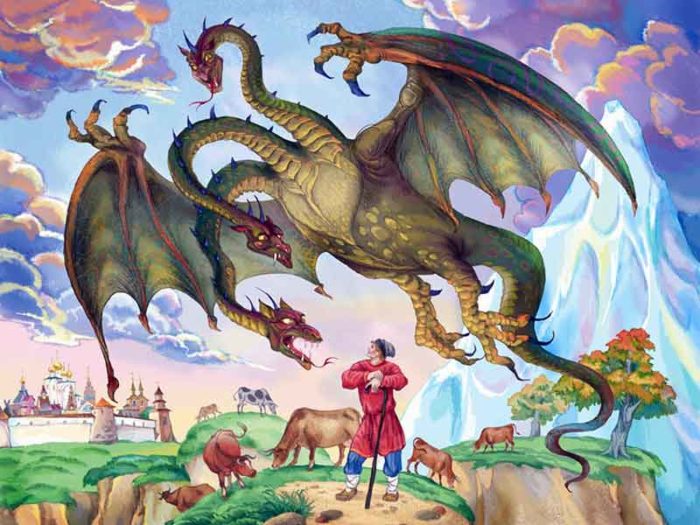
The serpent is one of the most popular and mysterious characters of not only Slavic, but of all the world's epics and mythology. To try to unravel the meaning of this figure, it is necessary to look back centuries, or millennia.
For the first time the cult of the snake or the snake appeared in the Neolithic age which began in the ninth Millennium BC the image of a snake, and often two snakes spivshiesya in a ball are prominent in pottery painting. Also, this picture can be seen on the breast of the female figurines. This tradition continued during the late Neolithic and during the bronze age. Unlikely at that time, the snake symbolized something negative, rather the opposite. It is believed that this is due to the cult rain (water) that was needed by the ancient farmers, and from which depended not only the harvest but also the life of the tribe. The snake probably was the harbinger of rain, because the activity of snakes before the rain increased. That is, the serpent in this era just personified the water and no more.
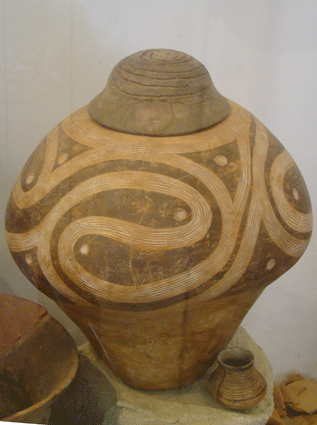
In the bronze age representations of the person about the world began to change. So if Trypillians earth was the bottom of the world, during the bronze appear the underworld, or to be more precise, underground and underwater. In the view of many Nations appears the idea of some underground river or ocean, where night sails the Sun. The guardian of this underworld were often the serpent-lizard. So for example, among the inhabitants there is a myth about the three-dimensional world. The Lord of the lower world is the serpent-dabar (jamdar). Often the snake-lizard was portrayed as two-headed. One head night has swallowed the Sun, and the second head in the morning as it spewed it. Maybe here and began the many-headed serpent.
That is probably turns out that the forerunner of rain and the personification of water snakes, besides living underground in deep burrows transformed into Bishop or the guardian of the underworld. Although at this time the snake was not a negative character, because the underground world, and together with him and his guardian was not associated with something negative.
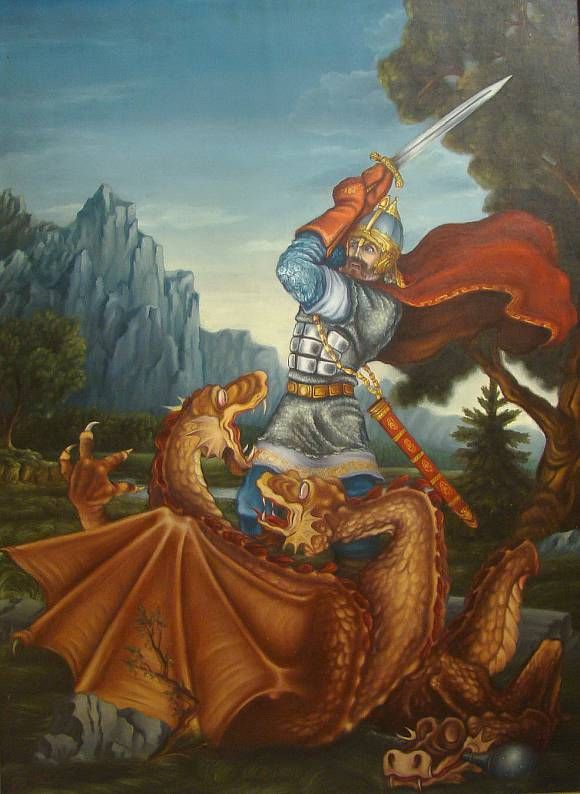
Over time, the underground world of many peoples became associated with death. So the ancient Greeks and Romans, Hades is where departed souls of the dead. The Slavs underworld called NAV, there lived all sorts of evil and there were neophocaena souls of people who could turn into vampires or ghouls. It is no wonder that the serpent who was guardian of this world have become associated with evil and death.
If we turn to Russian folk tales, the main character in search of a stolen serpent bride, as in the case of a Koschei, before you get into the realm zmievo, passed through the hut of Baba Yaga. And Baba Yaga as you know, was a kind of guard on the border between the living world and the dead world, and her hut was a portal between worlds. So it turns out that the dragon lived in the Kingdom or world of the dead.
Incidentally, a favorite activity of the serpent, stolen brides Professor V. Y. Propp in his monograph "the Historical roots of the Magic Tale" explains the fact that in many Nations in order to propitiate the underground Lord of the serpent, brought him to the victim girl. Thus, in particular, in Ancient Egypt women were sacrificed to the crocodiles, for the sake of a good harvest.
So the serpent of the positive character first turned into neutral and then negative.
And so, we found out that the snake in Slavic mythology became associated with death, but not only. In addition to the bride theft, another favorite pastime was to burn the snake but to shoot the Russian city.
In the I Millennium BC, the ancient Slavs were faced with the steppe nomads, the Cimmerians raided their settlements, robbing and killing them. Then the Cimmerians were replaced by the Scythians, and the Sarmatians, and so on. These raids forced the Slav to build against the nomads of the fortifications, the first of which is known in the days of the Chornolis archaeological culture of the IX-VII centuries BC apparently the raids of nomads who carried death among the Slavs began to be associated with attacks snake. So in Russian and Ukrainian folk tales and myths of snakes often came from the sea or steppe, where just lived nomads. And presumably in the II century BC - VII century ad on the territory of Ukraine a network of earthen fortifications-called welfare "serpent's wall". The construction of these fortifications already entered several Russian and Ukrainian legends. The legend of God's blacksmiths Kuzma and Demian (another version of Boris and Gleb) who caught a snake forging claw in the language, harnessed him to a huge plow and forced to plow the earth while the serpent has not died. Plowed land serpent and bogatyrs Dobrynya Nikitich and Nikita Kozhemyaka, also until the snake is either drowned at sea or died of thirst.

Another Bogatyr Alyosha Popovich fought Tugarin Serpent. It is believed that the prototype Tugarin was the Polovtsian Khan Tugorkan (1028-1096 years). Which again proves the associativity of the serpent with the nomads.
Reflected zmeeborets in Christianity. So one of the most venerated Christian saints in Russia is St. George, often depicted on icons as a horseman slaying a serpent.
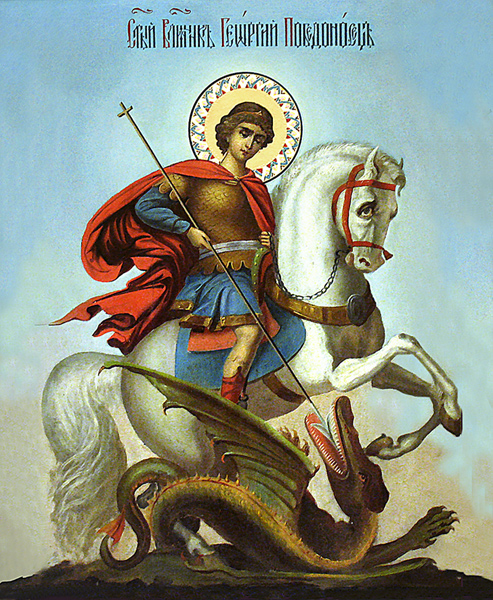
Thus, we can conclude that the serpent appeared in a religious cult in the Neolithic period as a harbinger of rain, transformed first into Bishop (the guard) of the underworld, then into Bishop (the guard) world of the dead, and then became associated with the steppe nomads who carried to Russia the death and devastation.
Hi. I am @greetbot - a bot that uses AI to look for newbies who write good content!
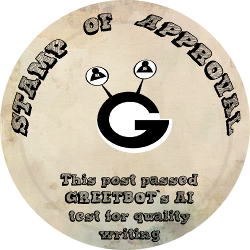
Your post was approved by me. As reward it will be resteemed by a resteeming service.
Resteemed by @resteembot! Good Luck!
The resteem was paid by @greetbot
Curious?
The @resteembot's introduction post
Get more from @resteembot with the #resteembotsentme initiative
Check out the great posts I already resteemed.